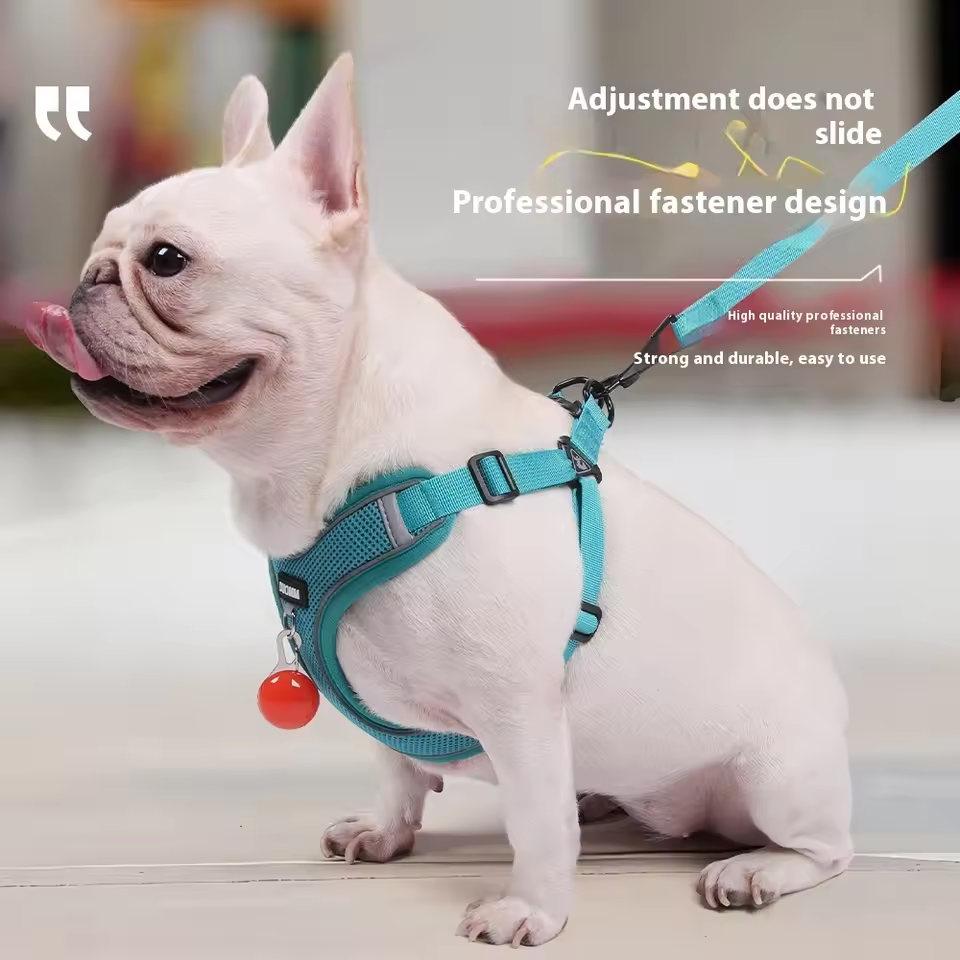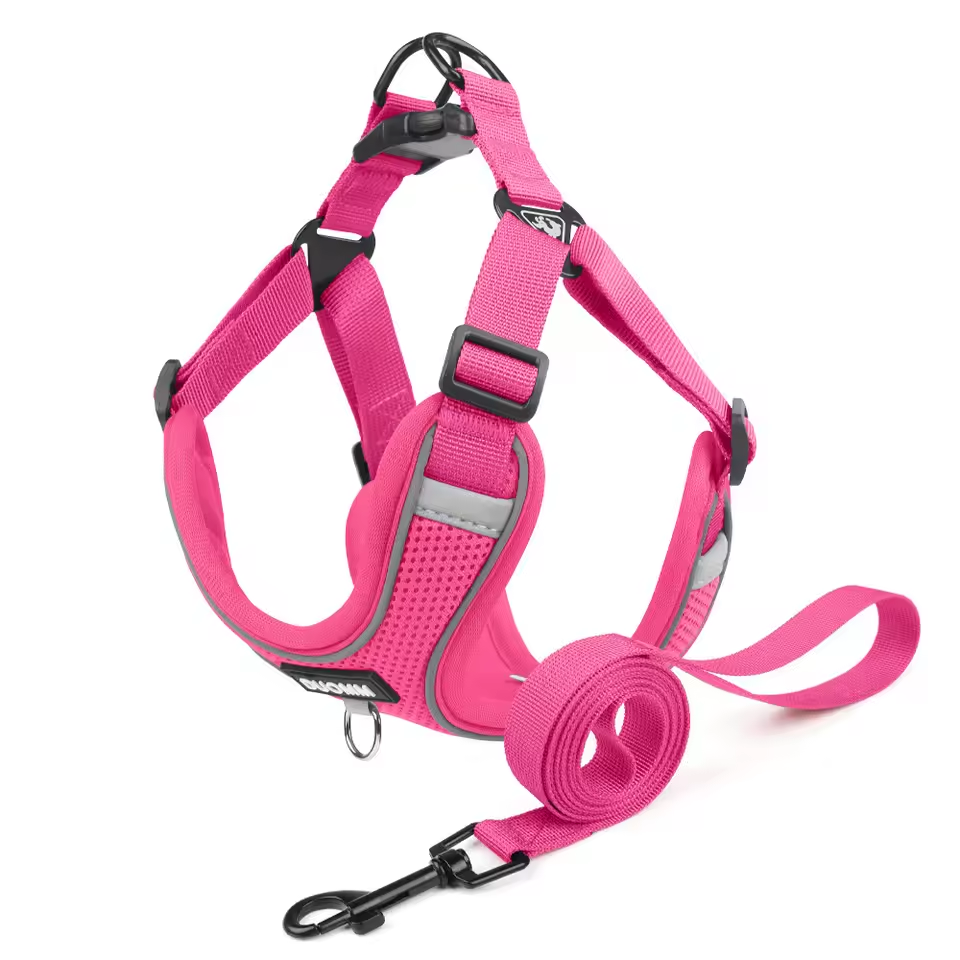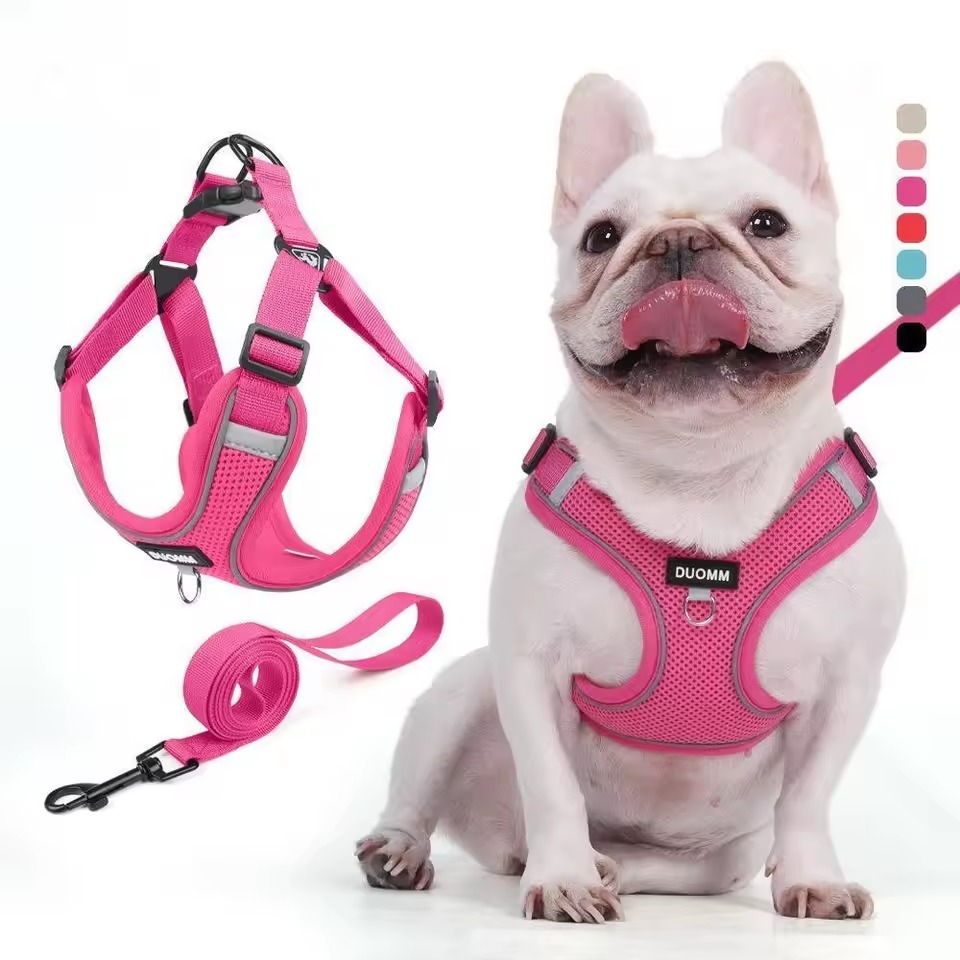Introduction to Dog Sledding
Dog sledding is a thrilling winter activity with a rich history. It involves a team of dogs pulling a sled across snow-covered landscapes. This sport taps into the natural pulling instincts of breeds such as Huskies and Malamutes. The experience connects humans and animals in a unique bond of trust and teamwork. To ensure safety and performance, a crucial element is the dog sled harness. This gear allows dogs to pull efficiently and comfortably. It also gives the musher, or sled driver, control during the ride. For those eager to try dog sledding, understanding the harness’s role is key. We will explore how to choose the right dog sled harness for your canine companions.

Essential Features of a Sled Harness
When looking for a dog sled harness, pay attention to key features that ensure functionality and safety.
Fit and Comfort
Fit is paramount for a harness. It should snugly fit your dog’s body without causing chafing or restricting movement. Padding in areas like the chest and shoulders can provide extra comfort. Look for adjustable straps to tailor the fit for your dog’s build.
Durability and Strength
The harness must withstand the rigors of sledding. Strong materials are a must. Stitching should be solid and the hardware, like buckles and D-rings, must be heavy-duty and resistant to wear.
Pulling Efficiency
A good harness spreads the pulling force evenly across the dog’s body. This design helps prevent injury and allows your dog to pull effectively. The pulling points should align with the dog’s center of gravity for optimal power transfer.
Safety Features
Reflective materials or bright colors enhance visibility. This is crucial for safety during dawn, dusk, or in snowy conditions. A quick-release system is an important safety feature to detach your dog quickly in case of emergency.
Breathability
During intense activity, your dog will heat up. A breathable harness material such as mesh can help regulate their temperature and prevent overheating.
By focusing on these essential features, you can select a dog sled harness that serves your dog’s needs and supports your winter adventuring together. Always prioritize functionality and the well-being of your sled dogs when making your selection.
Types of Dog Sled Harnesses
There are different types of dog sled harnesses to suit various needs and team setups. Understanding the variations can help you make an informed decision for your dogs.
X-Back Harness
This traditional harness has straps that form an ‘X’ across the dog’s back. It’s suited for sleds with a central towline. It allows for free motion and even distribution of pulling force.
H-Back Harness
The H-Back harness has a more rigid structure that distributes the load more widely across the dog’s body. This type is good for heavier sleds and offers more support.
Half-Back Harness
This is similar to the X-Back but with less material. It’s lightweight and provides more freedom of movement, ideal for sprint racing.
Wheel Dog Harness
Designed for the ‘wheel dogs’—the ones closest to the sled. This harness is robust, providing maximum strength and durability for steering and braking.
Lead Dog Harness
Specifically for the leading dogs, this harness gives more control and responsiveness for directing the team.
Neckline and Tugline Harnesses
Some systems involve separate necklines and tuglines to connect dogs to each other and the sled. It helps maintain team order and distributes force equally.
Choose a dog sled harness that complements your dog’s role in the team and supports its movement patterns. Ensure the harness type aligns with your sled dog’s comfort, pulling style, and the demands of your sledding activities.

Measuring Your Dog for a Perfect Fit
Ensuring the correct fit of a dog sled harness is essential. A badly fitting harness can lead to chafing, discomfort, and injury. Accurate measurement is the first step in finding the perfect fit. To measure your dog correctly, you will need a flexible tape measure. Begin by measuring the girth. This is the widest part around your dog’s rib cage. Make sure the tape is snug but not too tight. Note down this measurement. Next, measure the length from the base of the neck to the base of the tail. This helps determine the harness size. Measure the neck where the harness will sit. Be accurate; the neck measurement ensures the harness is not too tight or too loose.
Remember to weigh your dog. Weight can guide the correct harness size and strength. Always refer to the sizing charts provided by harness manufacturers. Each brand can have different sizing. Allow for some adjustment room in the harness for growth or weight changes. Double-check the fit before setting out. A well-fitting harness should be snug but not restrictive. You should be able to fit two fingers under any strap. Watch for signs of discomfort or restriction when your dog moves. If the harness leaves marks on the skin, or your dog seems uneasy, re-check the size. A perfect fit means a safe, comfortable run for both you and your furry friend.
Materials Used in Harness Construction
Selecting the dog sled harness with the right materials is crucial for durability and comfort. When considering materials, think about the conditions your dog will face and how the materials will affect performance and comfort.
Strength and Weather Resistance
Nylon is a top choice for harness construction. It’s strong, lightweight, and weather-resistant, making it ideal for the cold and damp conditions often encountered in dog sledding. Nylon also has the benefit of being relatively easy to clean, which is important after a long day on the trails.
Comfort and Padding
Fleece or neoprene padding is often used in areas where the harness contacts the dog’s body, like the chest and shoulder. These materials provide cushioning, reduce rubbing, and increase overall comfort for the dog while pulling.
Reflectivity and Safety
Some harnesses are equipped with reflective strips made from reflective tapes or threads. These materials are essential for visibility during low-light conditions, increasing the safety of your dog and team.
Breathability
Mesh panels are frequently incorporated into harness designs to ensure breathability. This helps manage your dog’s body temperature during intense physical activity, preventing overheating.
Hardware Materials
Strong metal or heavy-duty plastic buckles, D-rings, and snaps are crucial. They must withstand the forces of pulling and the harsh environments without breaking or corroding.
Choosing the right materials for your dog sled harness can greatly affect your dog’s comfort and the longevity of the harness. Always opt for high-quality, tested materials that will stand up to the exciting challenges of dog sledding.
Tips for Training Your Dog with the Harness
Getting your dog accustomed to the dog sled harness is vital for a successful sledding experience. To start, introduce the harness gently to your dog. Let them sniff and get familiar with it. Do this for a few days before trying to put it on. When you first fit the harness, reward your dog with treats or praise. Positive reinforcement fosters a good association with the harness.
Begin training slowly. Attach the harness and let your dog wear it during playtime. This helps them get comfortable with the feel of the harness while moving. After your dog seems at ease, attach a lightweight object for them to pull around. This step is key. It teaches them the concept of pulling with the harness without strain.
Consistency in training sessions is important. Practice regularly but keep the sessions short. This avoids overwhelming or exhausting your dog. Gradually increase the weight they pull. Always monitor your dog for signs of stress or fatigue. If they show any discomfort, scale back the training intensity or weight.
Ensure you command correctly while training. Use clear and consistent commands. This helps your dog understand what you’re asking accurately. It also strengthens your control when on the sled. Working as a team will become seamless on the trails with practice.
Lastly, be patient and maintain a calm demeanor. Dogs can sense their owner’s emotions. If you’re frustrated, they might become reluctant to train. Keep the mood positive, and your dog will grow to love pulling the sled.
Training your dog with the dog sled harness should be a bonding and enjoyable experience. With the right approach and patience, your companion will be ready for winter adventures in no time.
Maintenance and Care for Sled Harnesses
Taking care of your dog sled harness is key to its longevity and your dog’s safety. Here are some tips to keep your harness in top condition.
Regular Inspection
Check the harness before and after each use. Look for signs of wear or damage. Pay close attention to the stitching, buckles, and D-rings. Replace the harness if you find any serious faults.
Cleaning the Harness
After use, remove snow, dirt, and debris from the harness. Clean it with mild soap and water. Rinse it well and let it air dry completely before storing. Avoid using harsh chemicals that could weaken the materials.
Storing the Harness
Store the harness in a dry, cool place out of direct sunlight. Sunlight can fade colors and weaken synthetic fibers over time.
Checking for Fit
As seasons change, your dog’s weight may vary. Regularly reassess the fit of the harness. Ensure the harness continues to fit snugly yet comfortably.
Repairing Damage
Small issues can turn into big problems if ignored. Mend minor damage like loose threads or small tears quickly. This can prevent them from becoming serious weaknesses.
By following these simple care steps, your dog sled harness will remain safe, comfortable, and effective for all your winter expeditions. Always remember, a well-maintained harness is essential for a happy sled dog and a successful ride.

Finding the Best Harness for Your Sled Dog
Choosing the right dog sled harness is a final, important decision. To make a good choice, consider your dog’s specific needs. Think about their size, strength, and the role they will play in your sled team. Speak with experienced mushers and harness makers for advice. They have insights that can guide your selection. Always test the harness for a secure fit and watch how your dog moves in it. Look for any signs of discomfort or restriction. Also, pick a harness that you can maintain easily. One that cleans up well and withstands harsh conditions is ideal. By considering these points, you will find the best harness for your sled dog. Your winter adventures will be safe and enjoyable for both you and your furry friend.